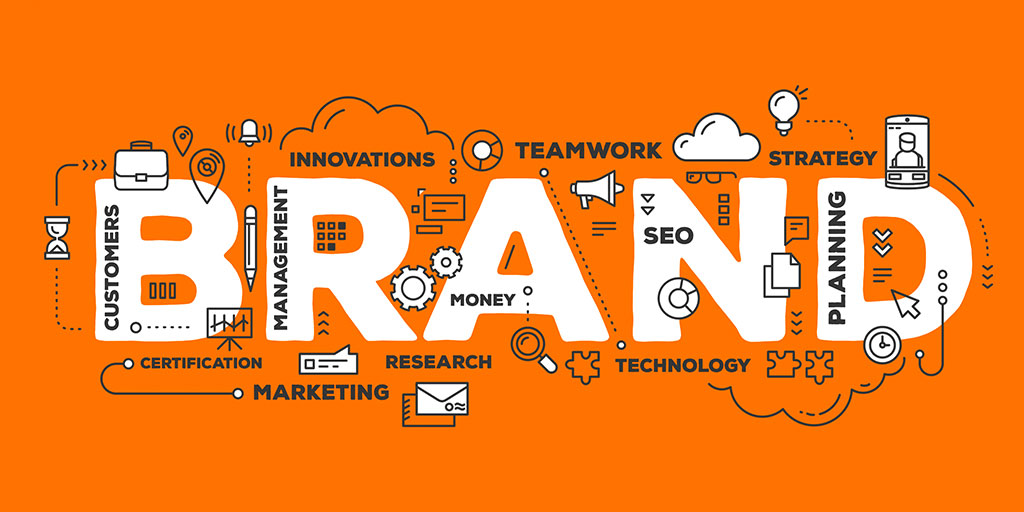
Brand development is a crucial process that can determine the success or failure of a business in today’s highly competitive market. Strong brands stand out, build customer loyalty, and create significant value over time. Strategic brand development is about creating a unique identity, establishing a strong market presence, and consistently communicating the brand’s value to customers. In this article, we will explore key brand development strategies that businesses can use to develop and maintain a successful brand.
What is Brand Development?
Brand development refers to the activities and strategies that a company employs to establish and strengthen its brand identity, positioning, and perception in the market. It includes crafting a brand’s purpose, values, messaging, visual identity, and emotional connection with customers. A strong brand helps companies stand out in a crowded market, differentiate themselves from competitors, and build long-term customer loyalty.
Key Elements of Strategic Brand Development
Strategic brand development involves creating a clear and compelling brand strategy that aligns with a company’s overall goals. The process is multifaceted and involves several critical components:
Brand Purpose and Mission: The foundation of any successful brand is its purpose. A brand’s purpose explains why it exists and what it aims to achieve in the world beyond just making a profit. It defines the company’s core values and vision for the future.
Brand Identity: Brand identity is the collection of visual, verbal, and emotional elements that distinguish the brand from others. This includes the logo, color scheme, typography, tagline, and the tone of voice used in communication. A well-defined brand identity helps create recognition and trust among customers.
Brand Positioning: Brand positioning refers to how a brand is perceived in the marketplace relative to competitors. It answers the question, “What makes this brand unique?” Effective brand positioning requires understanding target audiences, their needs, and how the brand can fulfill those needs in a way that competitors cannot.
Brand Values: These are the core principles and beliefs that drive the brand’s actions and decisions. Brand values help to establish an emotional connection with customers and serve as a guideline for behavior and business practices.
Brand Promise: A brand promise is a commitment made by the company to its customers regarding the experience and value they can expect. It sets clear expectations and influences customer satisfaction and loyalty.

Brand Development Strategies
Now that we understand the key elements of strategic brand development, let’s look at the specific strategies businesses can use to build and grow their brands.
Market Research and Customer Understanding
The foundation of any successful brand development strategy is a deep understanding of the target market and customers. Before developing a brand, businesses need to conduct market research to gather insights into customer needs, behaviors, pain points, and preferences. This information helps in crafting a brand identity and positioning that resonates with the target audience.
Customer Segmentation: Divide your target audience into smaller, more manageable groups based on factors like demographics, psychographics, buying behavior, and needs. Tailor your branding efforts to cater to the distinct characteristics of each segment.
Competitive Analysis: Understanding the competitive landscape is crucial. Analyze your competitors’ strengths, weaknesses, and positioning to identify gaps and opportunities for differentiation.
Creating a Unique Brand Identity
A strong, consistent brand identity is essential for standing out in the marketplace. This includes crafting a memorable logo, choosing the right colors and fonts, and defining your brand’s personality. The goal is to create an identity that reflects the brand’s purpose and resonates emotionally with customers.
Logo Design: Your logo is often the first point of contact between your brand and potential customers. It should be simple, memorable, and easily recognizable. It should also align with your brand values and positioning.
Color Palette: Colors evoke emotions and have psychological significance. Choose colors that reflect your brand’s personality. For example, blue represents trust and professionalism, while red symbolizes passion and energy.
Typography and Imagery: Choose fonts and imagery that align with your brand’s tone of voice and message. Consistency in visual elements is key to creating a cohesive brand identity.
Brand Positioning and Differentiation
Brand positioning is about finding a unique space in the market that sets your brand apart from competitors. A strong positioning strategy makes it clear why customers should choose your brand over others.
Unique Selling Proposition (USP): Your USP defines what makes your brand different and better than competitors. It could be product quality, exceptional customer service, or unique features. The USP should be at the core of your messaging and brand communication.
Storytelling: A compelling brand story can enhance your positioning. Stories humanize your brand and make it relatable, helping customers connect with your brand on an emotional level. Share stories about your brand’s origin, its journey, and how it solves customer problems.
Consistency Across All Touchpoints
Consistency is key to building a strong brand. Whether a customer interacts with your brand online, in a physical store, or through customer service, the experience should be consistent in terms of messaging, visual identity, and customer experience.
Brand Guidelines: Develop clear brand guidelines that outline the rules for using your logo, colors, typography, tone of voice, and messaging. Ensure that these guidelines are followed across all marketing materials, advertising, and customer touchpoints.
Omnichannel Presence: In today’s digital age, customers engage with brands through multiple channels—website, social media, email, etc. Maintain a consistent brand presence across all of these platforms, ensuring the experience is seamless and unified.
Building Brand Awareness
Brand awareness is critical for brand development. The more people know about your brand, the more likely they are to trust it and become loyal customers. There are several ways to increase brand awareness:
Content Marketing: Create valuable, informative, and entertaining content that resonates with your target audience. Content marketing, including blogs, videos, and infographics, can help you attract and engage customers.
Social Media Marketing: Social media platforms like Facebook, Instagram, and LinkedIn are powerful tools for increasing brand awareness. Regularly posting and engaging with your followers can help spread the word about your brand and build a community of loyal fans.
Influencer and Affiliate Marketing: Partnering with influencers or affiliate marketers who share your brand’s values and target audience can significantly boost brand visibility and credibility.
Customer Experience and Loyalty Programs
Providing an exceptional customer experience is essential for brand development. A positive experience can lead to customer loyalty, which is one of the strongest drivers of brand success.
Customer Support: Offer outstanding customer service that exceeds expectations. Whether it’s through live chat, email support, or in-person interactions, a positive experience can turn customers into brand advocates.
Loyalty Programs: Implementing loyalty programs or reward schemes can encourage repeat business. Offering discounts, exclusive access, or special promotions to loyal customers can help foster long-term relationships.
Monitor and Adapt the Brand Strategy
Brand development is not a one-time effort—it’s an ongoing process. It’s essential to regularly monitor the performance of your brand strategy and make adjustments as needed based on market changes and customer feedback.
Customer Feedback: Regularly collect customer feedback through surveys, reviews, and social media interactions. Use this feedback to improve your products, services, and brand messaging.
Brand Audits: Conduct periodic brand audits to assess whether your brand is staying true to its mission, values, and positioning. Identify any areas that may require a refresh or adjustment.
Conclusion
Strategic brand development is a long-term commitment that requires careful planning, creativity, and consistent execution. The key to successful brand development is creating a unique, differentiated brand that resonates with your target audience and stands out in the marketplace. By following these strategies—understanding your market, building a strong brand identity, positioning your brand effectively, maintaining consistency, increasing awareness, delivering excellent customer experiences, and continuously evolving—you can develop a brand that not only survives but thrives in a competitive business environment. Whether you are a startup or an established company, strategic brand development is the cornerstone of sustainable growth and success.